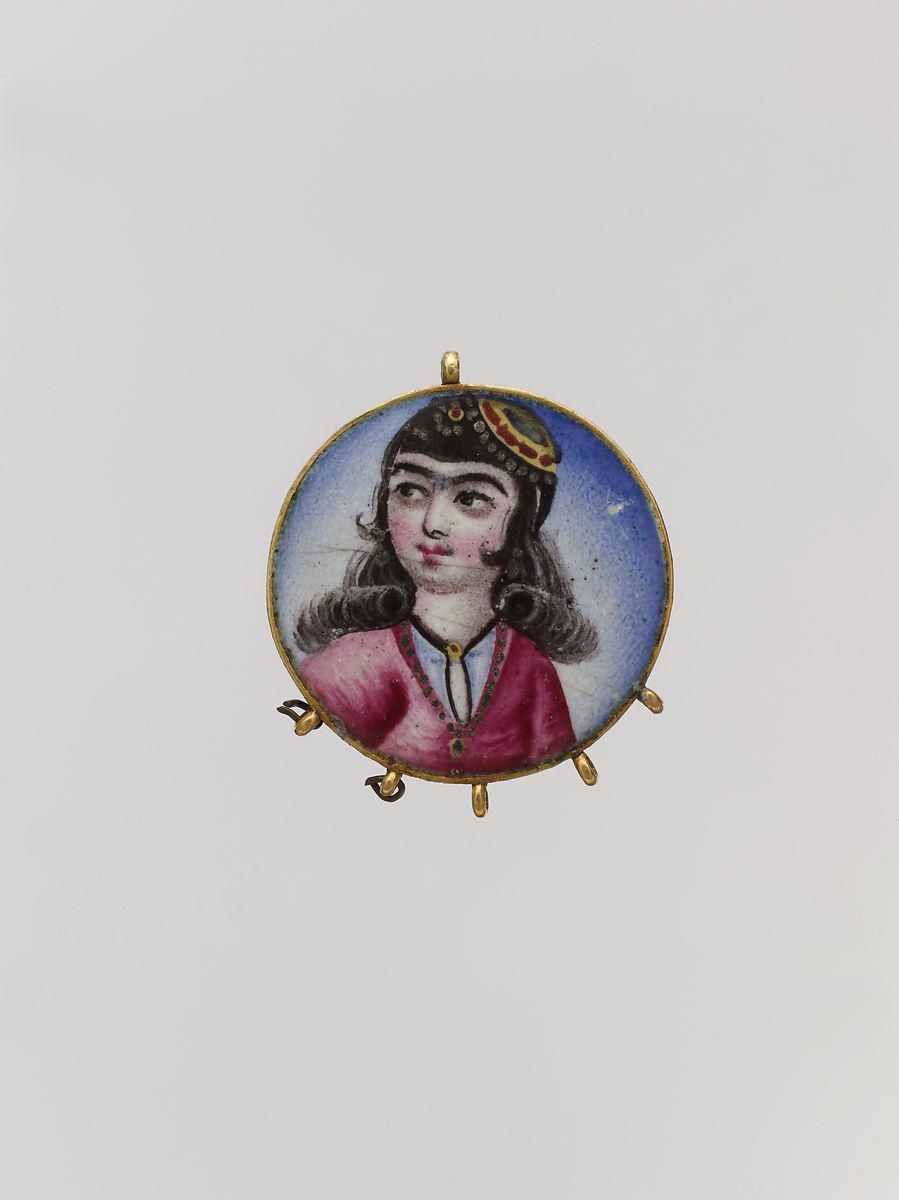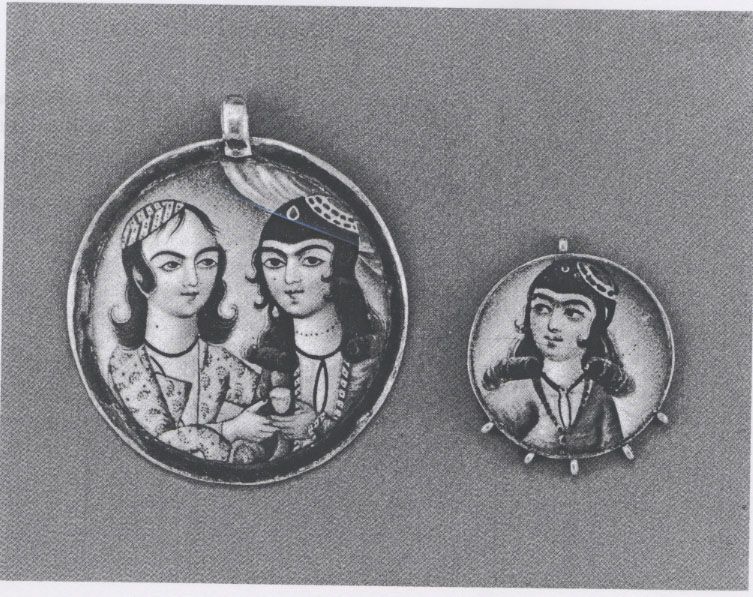

Portrait of a Girl in a Round Pendant
Unknown Artist
The enamels of Qajar Iran are figurative, and closely resemble in style oil paintings produced during the same period. Scenes of youth and lovers are typical subjects depicted on these enamels. Both the oil paintings and enamels are valuable documents of prevalent styles in costume and jewelry. Round or elliptical enamel plaques such as this were commonly set into water pipes or other utilitarian objects. The engravings on the back of this pendant, however, may indicate that it was used as a talisman. The top line of engraving consists of a series of arrowlike signs separated by vertical strokes; the next six lines consist of an uninterrupted series of from nine to sixteen numbers, probably of occult significance. The bottom three lines contain the inscription: "Allah! Allah! Muhammad [the] Prophet/'Ali ibn Abi-Talib/ (Quli?)." Whether or not the bottom line is a signature (the word quli means "slave" and was a common name in Iran) is not known.
Credit: Gift of Mrs. Frederick F. Thompson, 1920
Late 18th-early 19th century
Gold; enamel-painted
3.3 cm
20.106.2
Image and text © Metropolitan Museum of Art, 2025
Where you'll find this

The Metropolitan Museum of Art
Permanent collection
